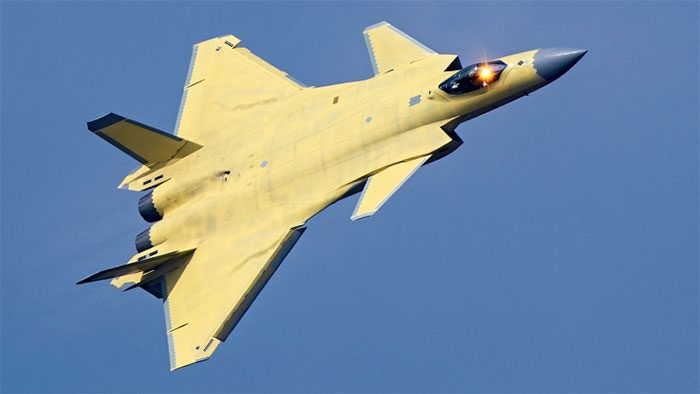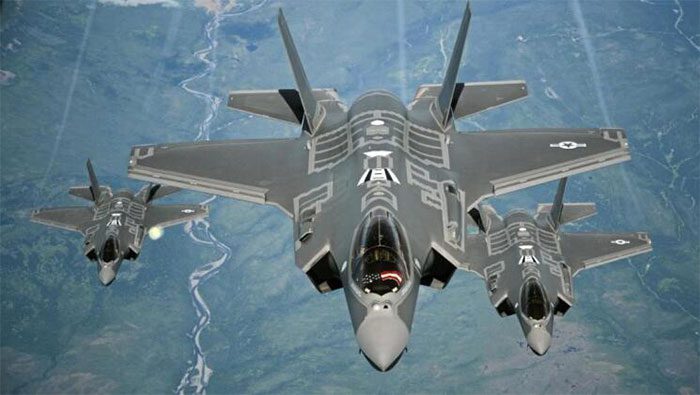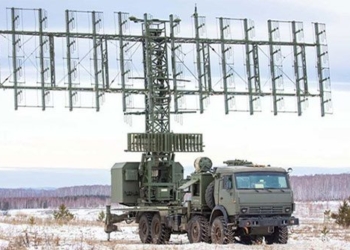Military Watch (MW) has ranked the top 8 air superiority fighter jets in the world, but it’s important to note that the order they provided does not imply a definitive ranking. The ultimate positions of these aircraft will be determined by the readers themselves.
The Best Military Aircraft in the World Today
1. J-20A (China)
The J-20, delivered to the People’s Liberation Army Air Force (PLAAF) in 2016, represents one of only two fifth-generation fighter jets currently produced and equipped at the squadron level, similar to the F-35.

The improved J-20A variant entered production in 2019.
Unlike the F-35, the J-20 utilizes a heavy twin-engine airframe that can accommodate larger radar and more weapons. This design allows the aircraft to fly farther, faster at higher altitudes, and have greater maneuverability.
The upgraded J-20A variant, which began production in 2019, further enhances the aircraft’s stealth capabilities and integrates the new WS-10C engine, making it the only fifth-generation fighter (among those currently in production) capable of sustained supersonic flight without afterburners.
The J-20 is highly regarded for its access to both short-range and long-range air-to-air missiles, specifically the PL-10 and PL-15, the latter of which has a longer range than its Western counterparts and features an Active Electronically Scanned Array (AESA) radar.
Production of the J-20 is rapidly increasing, and its quickly enhanced capabilities have led many analysts to consider it a leading air superiority fighter globally.
2. F-22 (USA)

The F-22 employs thrust vectoring engines to enhance maneuverability.
The F-22A Raptor joined the U.S. Air Force in December 2005 after years of delays and budget cuts following the Cold War. The Raptor’s revolutionary F119 engines provide more thrust than any other engines worldwide. Meanwhile, the stealth capabilities of the F-22 are considered superior in many respects.
The F-22 uses thrust vectoring engines to improve maneuverability; however, weaknesses in its avionics system have significantly hindered its performance at all ranges, not only in comparison to the F-35 and J-20 but also against modern variants of fourth-generation fighters like the F-15EX or F-16 Block 70/72.
F-22 production ceased in 2009, less than three and a half years after the aircraft entered service. Extremely high maintenance requirements and relatively low durability are among the factors that may force the F-22 into early retirement.
3. Su-57 (Russia)

The Su-57 is regarded as having immense potential in all roles.
The Su-57 is Russia’s second attempt to develop a fifth-generation air superiority fighter, following the ambitious MiG 1.42 program, which collapsed due to the decline of Russia’s economy and industry in the 1990s.
The new fighter jet first flew in 2010, although delays in the program have prevented it from entering service at the squadron level.
In contrast, the Su-57 is the only fifth-generation fighter to have seen combat, conducting missile strikes against rebel forces in Syria. It also boasts a range of unique features not found on American or Chinese aircraft.
While it has lower stealth capabilities than other contemporary fighters, the Su-57 benefits from specialized radar access, providing a very high situational awareness level and the ability to track 60 aerial targets simultaneously.
The Su-57 is rated as having immense potential in all roles and features a more balanced, multirole design compared to the two aircraft developed in China and the USA.
4. F-35A/C (USA)

The F-35 was primarily developed for ground-attack operations.
The F-35 is a lightweight fighter designed to offer a more cost-effective solution compared to the F-22.
Its ability to aggregate data from a broader information network gives the F-35 a significant situational awareness advantage at greater ranges. Meanwhile, the use of helmet-mounted display technology allows the F-35 to engage targets from angles that the F-22 cannot.
However, the F-35 is limited by its lower maneuverability, smaller payload, and lesser stealth compared to the F-22.
While primarily developed for ground-attack missions, its sophistication indicates that its air-to-air combat capability could become very robust if current design issues are resolved.
5. MiG-31BM/BSM (Russia)

This is the fastest modern fighter aircraft in the Russian inventory.
The MiG-31 is considered the strongest fighter/interceptor in the Russian arsenal. This aircraft also has specialized variants for anti-satellite operations, such as the MiG-31K, which is equipped with the hypersonic Kinzhal missile.
The MiG-31 features radar larger than that on any other fighter or interceptor worldwide. It is also the fastest modern fighter in Russia’s inventory, capable of speeds up to Mach 2.8.
It can fly at supersonic speeds for extended periods, has high durability, and can operate in extreme temperature conditions, as well as land on rough airstrips. This makes it ideal for defending the Arctic region that Russia disputes with the West.
However, whether this aircraft will continue to be modernized by the mid-2020s depends largely on the progress made on the MiG-31’s ‘successor,’ currently under development under the PAK DP program (MiG-41).
6. J-16/J-15B (China)

The J-16 is built based on the high durability of the Su-27 design.
China acquired its first Su-27 Flanker fighter jets from the Soviet Union in 1991, with three delivered that year. Subsequently, Beijing heavily invested in domestic licensed production, leading to the development of indigenous variants with significantly greater capabilities.
The J-16 is constructed based on the high durability of the Su-27 design, capable of carrying large sensors and delivering excellent flight performance despite limited stealth. It features fifth-generation avionics and advanced weaponry, notably the PL-10 and PL-15 missiles.
Meanwhile, the J-15B is a derivative of the Flanker that integrates similar technologies deployed by the Chinese Navy for carrier operations. This aircraft has a single-seat design instead of a two-seat layout, focusing more on air superiority and possessing many performance strengths similar to the J-16.
The avionics system of the J-16 is also utilized as a foundation for China to modernize older Flanker variants like the J-11B series. The upgrade package includes modern sensors, missiles, data link systems, and more.
7. Su-35S (Russia)

The Su-35S boasts access to three types of radar.
Joining the Russian Air Force in early 2014, the Su-35S is derived from the Su-27 Flanker and has significantly benefited from enhanced development programs such as the Su-27M, Su-37, and Su-35BM.
The Su-35S proudly has access to three types of radar, including two L-band AESA radars optimized for electronic warfare and anti-stealth missions. This aircraft similarly utilizes engines that are more powerful than any other Flanker variant, only slightly less powerful than the F119 engine on the F-22.
While lacking advanced avionics, stealth, and long-range missiles compared to the Chinese Flanker variants, the Su-35 has a much greater range, can climb faster, and is more agile. It is also designed to engage NATO’s fifth-generation jets in particular.
8. F-15EX (USA)

The F-15EX can carry a large number of air-to-air missiles.
Since its introduction in 2021, the F-15EX has shown to be less stealthy than the F-22, but it excels in most other aspects.
The F-15EX boasts significantly greater flexibility, allowing it to deploy a variety of air-to-ground weapons and anti-ship missiles. It is equipped with a more advanced radar system and an improved infrared search and track system. Additionally, its much lower maintenance requirements enable the F-15EX to maintain a higher operational readiness.
One of the standout features of the F-15EX is its ability to carry a large number of air-to-air missiles. In the future, it is expected to be able to deploy oversized missiles with extremely long ranges.
Furthermore, the F-15EX is more durable than the F-22 and features helmet-mounted display technology that allows for targeting from difficult angles.




















































